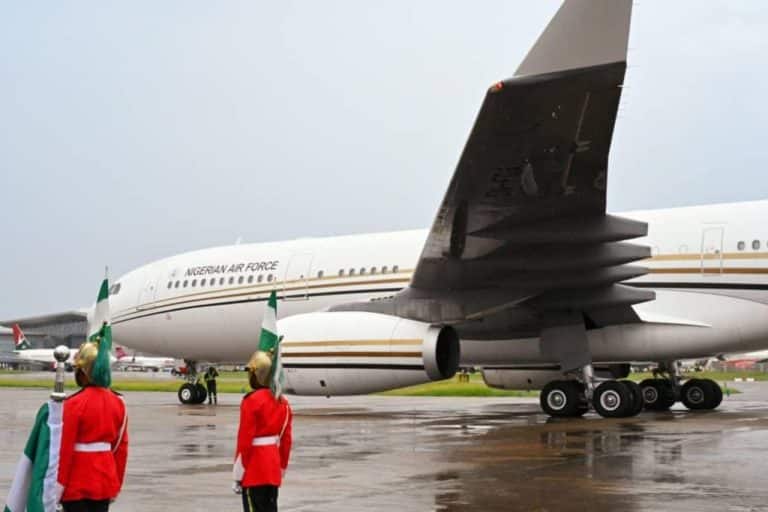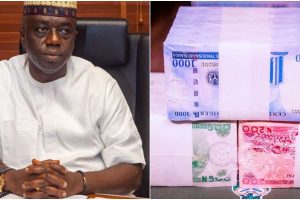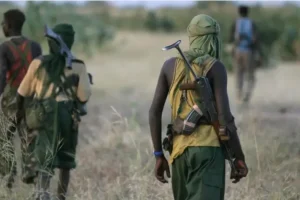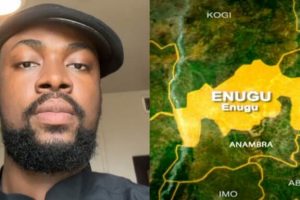
Nigeria’s Presidential Air Fleet (PAF) has incurred a staggering cost of ₦20.03 billion between July 2023 and December 2024, raising significant public concern and debate. Data obtained from civic tech platform GovSpend reveals that ₦14.15 billion of that amount was spent in 2024 alone, representing 71% of the total 2024 allocation for the air fleet.
Forex Transit Funds: The Cost of International Operations
A large portion of the expenditure was channeled into what is termed “Forex Transit Funds“—payments required in foreign currencies to cover operational needs such as fuel, aircraft maintenance, parking, and handling fees abroad.
A source familiar with the fleet’s operations told Punch that, “When presidential aircraft operate outside Nigeria, payments must be made in U.S. dollars or other major currencies to avoid disruption in services.”
For instance:
- In July 2023, ₦1.52 billion was disbursed for these operations.
- By August, the amount rose to ₦3.1 billion.
- Another ₦5.08 billion was spent in April 2024, coinciding with President Tinubu’s diplomatic visits to Saudi Arabia and the Netherlands.
Fleet Modernisation: Airbus A330 Acquisition and Refurbishment
Amid growing maintenance challenges with older aircraft, the Nigerian government has acquired a refurbished Airbus ACJ330-200, reportedly worth $100 million, as part of an ongoing fleet upgrade.
The jet, previously used by another entity, was flown to South Africa for refurbishment, including a customised interior and a presidential livery in line with the office of the Nigerian President. Officials claim the plane, equipped with advanced avionics and fuel-efficient systems, will cut long-term fuel and maintenance costs.
Despite this, President Tinubu has been using a San Marino-registered BBJ since February 2025 due to persistent technical faults in the primary presidential aircraft, a Boeing 737 originally acquired during President Obasanjo’s tenure.
What’s Driving the Soaring Costs?
Experts cite several reasons for the increased spending on the PAF:
- Aging Aircraft: Older planes require more frequent and costlier maintenance.
- Naira Devaluation: As the Nigerian currency weakens against the dollar, the cost of foreign services and parts soars.
- Security Concerns: Rising insecurity in Nigeria has driven up insurance premiums and operational costs.
According to Olumide Ohunayo, General Secretary of the Aviation Round Table:
“The falling value of the naira, coupled with aging aircraft and increased insecurity, has inflated costs across board—from training crew to insuring the aircraft. It’s not unexpected, but it’s definitely unsustainable.”
Past vs Present: PAF Budget Growth Since 2017
The allocation for maintaining the Presidential Air Fleet has ballooned by 370%, rising from ₦4.37 billion in 2017 to ₦20.52 billion in 2024. In 2022, annual maintenance costs per aircraft were estimated to range between $1.5 million and $4.5 million.
A recent incident in New York, where a foreign object cracked the cockpit windscreen of Vice President Kashim Shettima’s Gulfstream jet, further illustrates the financial burden. Replacing the damaged windshield alone was estimated to cost between $50,000 and $70,000.
Mixed Reactions: Criticism vs Justification
The staggering cost has sparked national outrage, with critics accusing the government of extravagance in a period of widespread economic hardship.
Debo Adeniran, Executive Chairman of the Centre for Anti-Corruption and Open Leadership (CACOL), condemned the trend:
“We expected a government that would be prudent with public funds. Instead, we’re witnessing excessive luxury in a poverty-stricken nation. It’s reminiscent of past administrations that prioritized comfort over citizens’ well-being.”
He criticized Vice President Shettima’s decision to cancel a high-level diplomatic trip over a cracked windscreen, calling it a waste of already committed resources.
Defending the Costs: Security and Practicality
Security expert John Ojikutu, CEO of Centurion Security Ltd, defended the spending, stating that comprehensive maintenance—including C-checks abroad, pilot logistics, and security—justifies the figures.
“These are routine expenses for high-level aircraft. Beyond repair costs, you have to account for fuel, crew lodging, and return flights,” he explained.
Presidency Responds: “It’s Not Luxury, It’s Necessity”
Bayo Onanuga, Special Adviser to the President on Information and Strategy, pushed back against criticisms, insisting that the fleet’s upkeep is not for Tinubu’s comfort but for national interest.
“The Airbus 330 is not a new purchase. It’s a refurbished jet and much newer than the one President Buhari used. We can’t risk the President flying faulty aircraft. His safety ensures Nigeria’s stability,” Onanuga said.
He also noted that the NSA, Nuhu Ribadu, recommended replacing the Boeing 737 due to unsustainable maintenance costs.
Conclusion: The Burden of Flying High Amid Economic Turmoil
As Nigeria continues to battle inflation, currency instability, and rising poverty levels, the rising cost of maintaining the Presidential Air Fleet has become a potent symbol of misaligned priorities, for critics and concerned citizens alike.
While some argue that presidential safety and diplomatic representation justify the expenses, others see the spending as tone-deaf excess in a time when millions of Nigerians are demanding austerity, accountability, and transparency.





